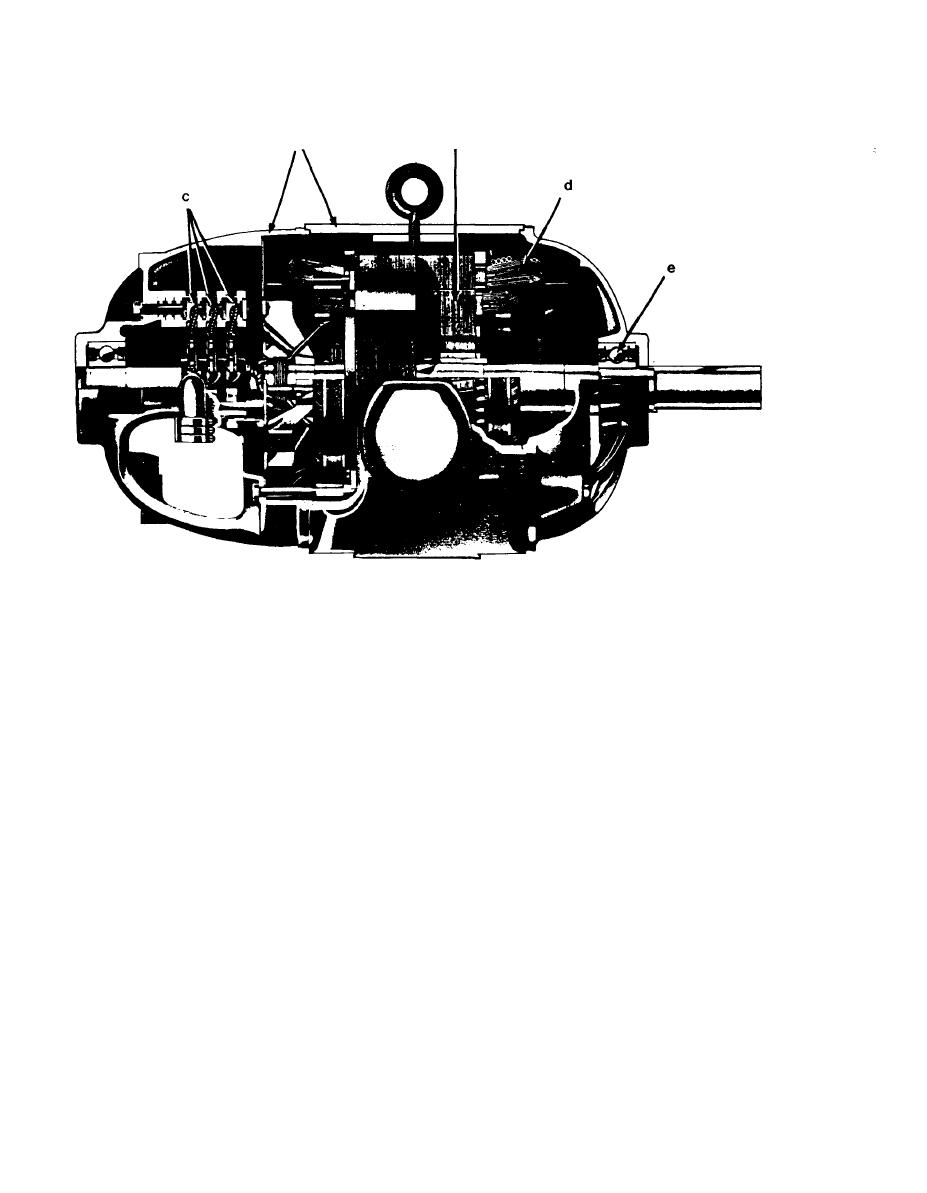

Custom Search
|
|

|
||
 TM 5-683/NAVFAC MO-116/AFJMAN 32-1083
b
a
Figure 4-2. Cutaway View of Wound-Rotor Induction Motor: a) Housing, b) Roto Assembly,
c) Slip Ring Brushes, d) Stator Windings, 3) Ball Bearings.
the manufacturer. A rag, barely moistened (not wet)
(a) Cleaning motor windings. Dust and dirt
with a nonflammable solvent, may be used for wip-
are almost always present in windings that have
ing. Avoid liquid solvent spraying which can carry
been in operation under average conditions. Dust
conductive contaminants into critical areas and con-
combined with high humidity becomes highly con-
tribute to short circuits and grounds. Apparatus
ductive. It may break down the winding insulation
which has been clogged with mud from dust storms,
and short circuit the motor windings. Frequent
floods or other unusual conditions, will require a
cleaning and drying may be necessary. Removing
thorough water washing. Usually, a hose at pres-
dry dirt with a clean, dry cloth is usually satisfac-
sures not exceeding 25 psi is used. After cleaning,
tory if the apparatus is small and the surfaces to be
the surface moisture should be removed immedi-
cleaned accessible. Do not use any material that
ately to keep the amount of water soaked up by the
will leave lint, for lint will adhere to the insulation
insulation to a minimum. Silicone-treated windings
and collect even more dirt. For removal of loose
require special treatment, thus the manufacturer
dust, dirt and particles, vacuum cleaning is pre-
ferred rather than blowing out with compressed air
should be contacted for advice.
(b) Drying motor windings. If after cleaning,
since there is less possibility of damage to the insu-
storing or shipping, tests indicate that the winding
lation and less chances of conductive or abrasive
insulation resistance is below a safe level (para
particles getting into areas that may cause damage
4-5), then the motor should be dried before being
during motor operation. Where dirt cannot be vacu-
placed in operation. Two general drying methods
umed, compressed air blowing may be used. How-
commonly used are external or internal heat. Exter-
ever, care should be taken that the dirt is not blown
out of one machine into another. Air pressure should
nal heat is preferred since it is the safer application.
not be greater than 30 psi. The air should be dry
When forced air is used (fig 4-5), it may be heated
and directed in such a manner as to avoid further
electrically or by steam. This method is usually in-
closing ventilation ducts and recesses in insulation.
efficient and costly unless built into the original
Goggles or face shield should be worn when using
installation. Electrical space heaters or infrared
compressed air to clean motors. Accumulated dirt
lamps may be used. They should be distributed so
containing oil or grease requires cleaning with a
as not to overheat the insulation. Coil insulation
solvent. The solvent should be as recommended by
may be dried by circulating current through the
4-9
|
 |
|
 |
||